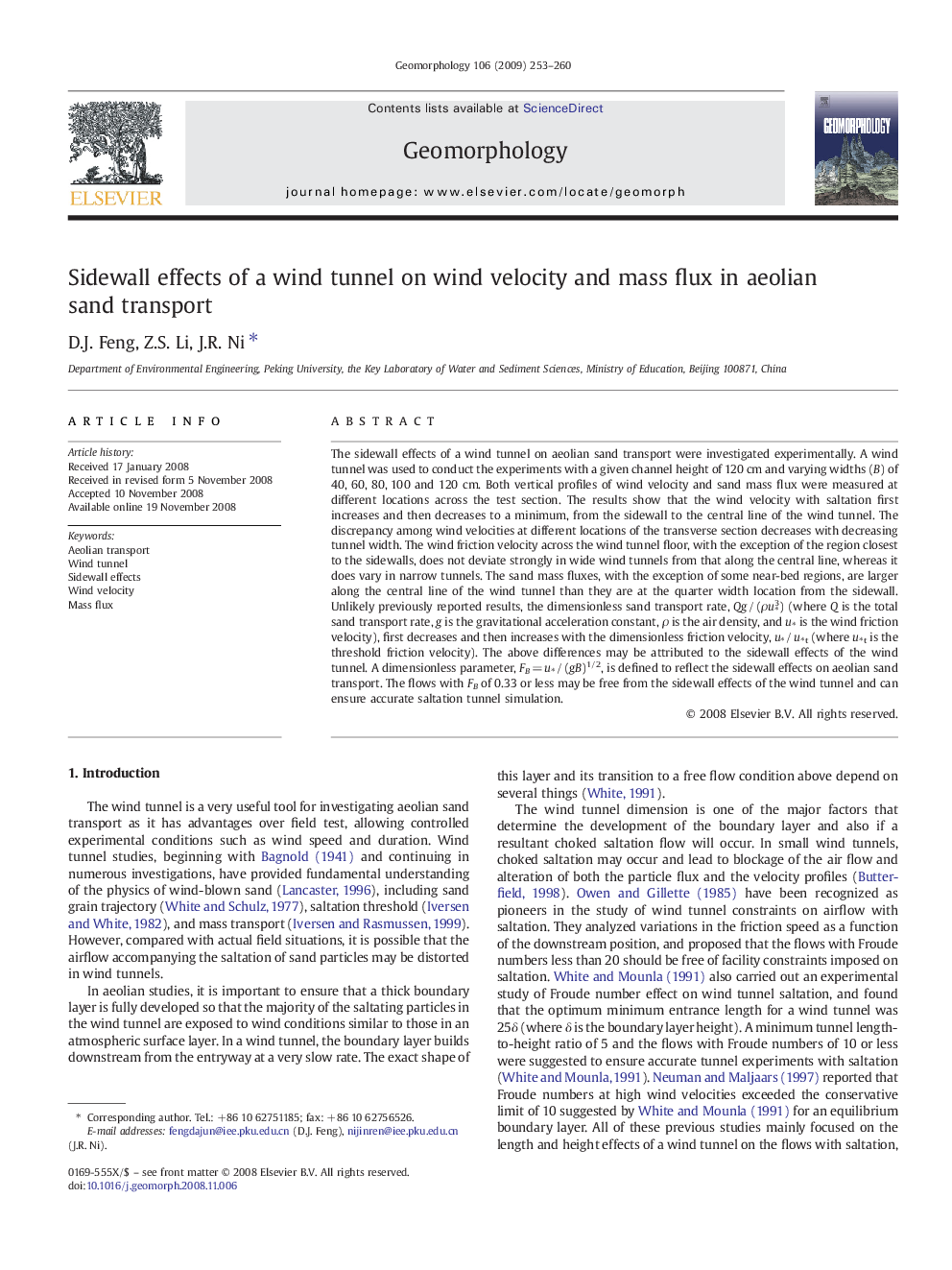| Article ID | Journal | Published Year | Pages | File Type |
|---|---|---|---|---|
| 4686325 | Geomorphology | 2009 | 8 Pages |
The sidewall effects of a wind tunnel on aeolian sand transport were investigated experimentally. A wind tunnel was used to conduct the experiments with a given channel height of 120 cm and varying widths (B) of 40, 60, 80, 100 and 120 cm. Both vertical profiles of wind velocity and sand mass flux were measured at different locations across the test section. The results show that the wind velocity with saltation first increases and then decreases to a minimum, from the sidewall to the central line of the wind tunnel. The discrepancy among wind velocities at different locations of the transverse section decreases with decreasing tunnel width. The wind friction velocity across the wind tunnel floor, with the exception of the region closest to the sidewalls, does not deviate strongly in wide wind tunnels from that along the central line, whereas it does vary in narrow tunnels. The sand mass fluxes, with the exception of some near-bed regions, are larger along the central line of the wind tunnel than they are at the quarter width location from the sidewall. Unlikely previously reported results, the dimensionless sand transport rate, Qg / (ρu⁎3) (where Q is the total sand transport rate, g is the gravitational acceleration constant, ρ is the air density, and u⁎ is the wind friction velocity), first decreases and then increases with the dimensionless friction velocity, u⁎ / u⁎t (where u⁎t is the threshold friction velocity). The above differences may be attributed to the sidewall effects of the wind tunnel. A dimensionless parameter, FB = u⁎ / (gB)1/2, is defined to reflect the sidewall effects on aeolian sand transport. The flows with FB of 0.33 or less may be free from the sidewall effects of the wind tunnel and can ensure accurate saltation tunnel simulation.
